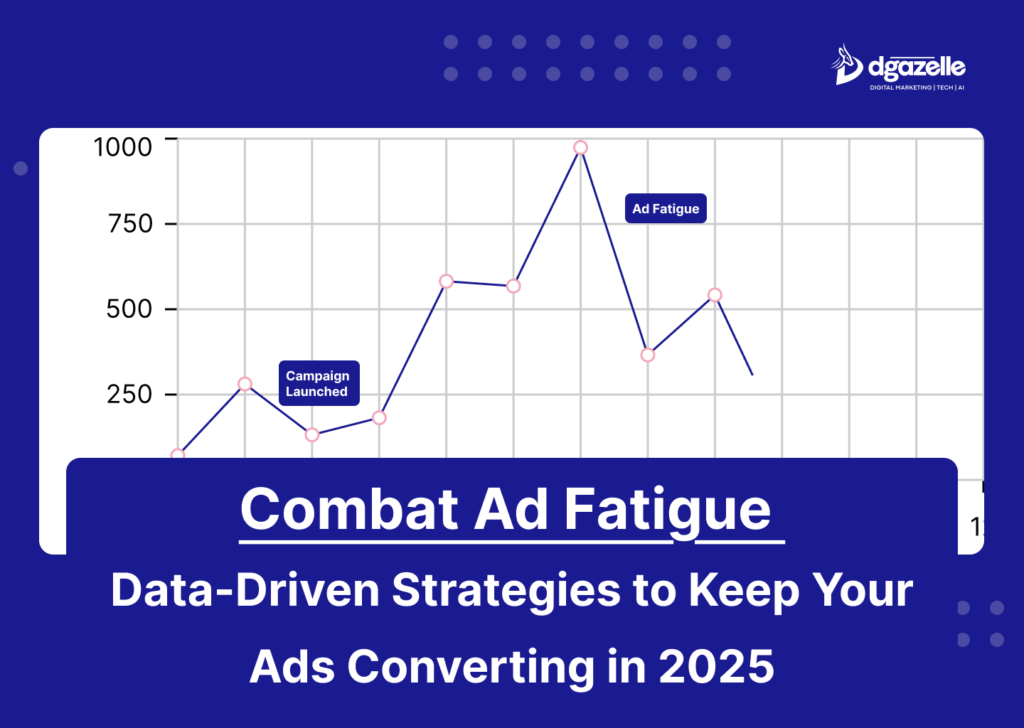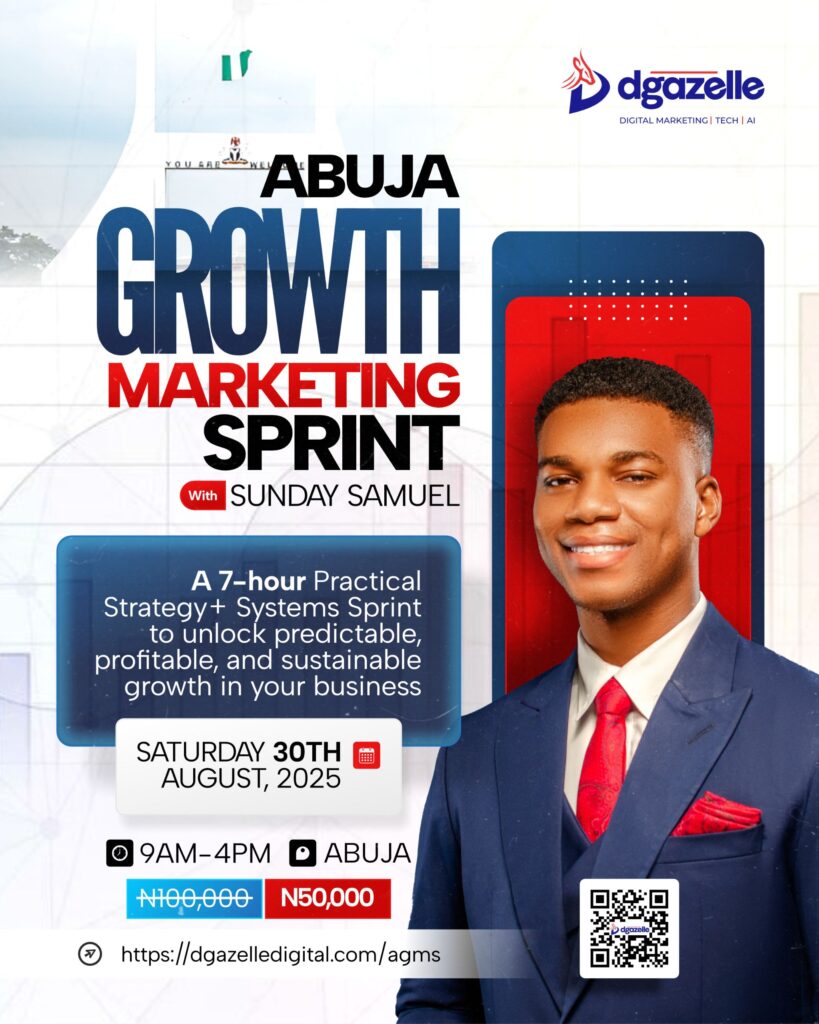Nigeria digital marketing is really competitive and, keeping your ads engaging is crucial, especially for small business owners leveraging social media platforms like Facebook and Instagram. Ad fatigue can hinder your campaign success, causing disengagement, lower sales, and decreased ad performance.
Ad fatigue occurs when your audience repeatedly sees the same ad, leading to a decline in click-through rates (CTR), conversions, and rising costs. This is a common issue that disrupts even the most well-planned campaigns, making it essential to recognize and combat it.
This guide is designed for Nigerian small businesses, offering practical, data-driven strategies to keep your ads converting in 2025. Whether you’re running Marketing Services or handling PPC campaigns, understanding and managing ad fatigue is vital to maintaining high ROI.
Understood! Here’s the streamlined and SEO-optimized version of the provided section, tailored to small business owners in Nigeria:
Understanding Ad Fatigue
Ad fatigue occurs when your audience loses interest in an ad after seeing it too many times. It’s like hearing your favorite song on repeat—initially exciting, but eventually, you start ignoring it. On platforms like Facebook and Instagram, this results in lower engagement, reduced conversions, and rising costs for Nigerian small businesses.
Repetitive exposure to the same ad can cause audiences to tune out. Just like a song you’ve heard too often, ads lose their appeal when they’re shown too frequently without variation. This natural consequence of overexposure makes it harder for small businesses to capture attention and maintain conversions.
What Causes Ad Fatigue?
Several factors contribute to ad fatigue:
- Overexposure: Showing the same ad too frequently to the same audience.
- Lack of Variety: Using identical visuals or messaging across campaigns.
- Extended Campaign Duration: Running the same ad creative for too long without refreshing it.
- Narrow Targeting: Repeatedly showing ads to a small audience segment.
These issues can reduce engagement and hurt your brand’s image, making it more difficult to achieve sustainable growth on platforms like Facebook and Instagram.
Why Ad Fatigue Matters for Nigerian Small Businesses
On platforms like Facebook and Instagram, ad fatigue can hurt your business’ performance. It leads to:
- Lower Click-Through Rates (CTR): Fewer users engaging with your ads.
- Decreased Conversion Rates: A drop in users completing desired actions.
- Reduced ROI: Increased costs with minimal returns.
Recognizing ad fatigue and addressing it early is essential for maintaining a high-performing marketing strategy in Nigeria’s competitive digital space.
Here’s the revised and SEO-optimized version of the section, tailored for small business owners in Nigeria and focused on platforms like Facebook and Instagram:
Signs You’re Experiencing Ad Fatigue
Identifying ad fatigue early can save your campaigns from declining performance. Here are six key signs Nigerian small business owners should watch for on platforms like Facebook and Instagram:
- Declining Click-Through Rates (CTR)
A steady drop in CTRs is often the first sign of ad fatigue. If your visuals or messaging no longer capture attention, your audience stops engaging. Monitor trendlines for a consistent decline. - Rising Cost-Per-Mille (CPM)
When engagement drops, platforms like Facebook charge more to show your ads. Increasing CPMs indicate your ads aren’t connecting with users. To counter this, refine your targeting or explore new audience segments. - Falling Conversion Rates
Even with clicks, declining conversions (purchases or sign-ups) suggest your messaging is stale or your offer isn’t compelling. Refresh your ad content to stay relevant. - High Frequency Scores
Ad platforms track how many times users see your ads. A frequency score above 3–5 means your ads are overexposed. Adjust frequency caps to prevent audience fatigue. - Negative Audience Feedback
Comments like “I see this ad everywhere” or “Stop showing me this!” are clear warnings. Negative feedback signals it’s time to rethink your strategy and ad rotation. - Dropping Engagement on Social Media
Metrics like likes, shares, and comments provide insight into audience interest. If these interactions decline sharply, it’s a sign your ads are no longer engaging.
Proactively addressing these signs will help your business maximize returns on platforms like Facebook and Instagram.
Here’s the optimized version of your section, tailored for platforms like Facebook and Instagram with the standing instructions:
Combatting Ad Fatigue
Once you’ve identified ad fatigue in your campaigns, it’s time to take action. Here’s a proven three-part framework to resolve it: Creative, Campaign, and Channel.
Creative
The most common culprit for ad fatigue is your creative. Even if your team poured time and resources into crafting a “perfect” asset, one creative won’t cut it in today’s fast-paced world of performance marketing. Instead, aim for variety—launch multiple creative types with diverse styles, imagery, and hooks to keep audiences engaged.
Dynamic product ads (DPAs) are a cost-effective way to generate creative at scale. These ads dynamically pull product details, such as images, names, and prices, from your catalog. Enhanced catalog ads let you experiment with different CTAs and on-brand designs while launching multiple ads simultaneously.
By diversifying your creative, you’ll intercept potential customers as they scroll through competitive feeds like Instagram Stories or Facebook Reels.
Campaign
If creative tweaks don’t improve performance, assess your campaign mix. On platforms like Meta, ensure your campaigns leverage diverse audiences and placements. You can:
- Manually Set Up Campaigns: Target specific demographics (age, interests, or location) with dedicated budgets and frequency caps. Test placements such as Stories, Feed, or Carousel Ads.
- Use Automated Campaign Tools: Meta’s Advantage+ Ads combines audience targeting, placements, and budget optimization using machine learning. It adjusts based on conversion goals, like purchases, without requiring manual segmentation.
Automated campaign tools like Advantage+ streamline testing across audiences and placements while supporting dynamic product ads, making them powerful tools against ad fatigue.
Channel
If creative and campaign tweaks fail, it’s time to test new channels. Diversify by exploring platforms like TikTok, Snapchat, or Pinterest. These platforms can introduce your brand to fresh audiences, provide unique placements, and inspire creative innovation. This strategy ensures your campaigns stay relevant and engaging across platforms like Facebook and Instagram, maximizing ROI and combating ad fatigue effectively.
Conclusion
Ad fatigue may seem daunting, but understanding its causes and signs is your first step to overcoming it. By staying vigilant with performance metrics, engagement rates, and ad frequency, you can address issues before they harm your campaigns.
Implementing a strong experimentation framework—focusing on Creative, Campaign, and Channel—is essential for keeping your ads fresh and engaging. From refreshing visuals to testing new platforms, proactive strategies help maintain audience interest and maximize ROI.
Remember, data-driven decisions are your strongest ally. Use insights to optimize your campaigns continuously, and don’t hesitate to explore dynamic product ads for scalable creative solutions. Stay adaptable, and you’ll keep ad fatigue at bay while achieving your marketing goals.
Ready to revamp your campaigns and keep your audience engaged? Let Dgazelle’s expert digital marketing services take your ads to the next level. From creative refreshes to data-driven strategies, we’ll help you combat ad fatigue and drive meaningful results.







